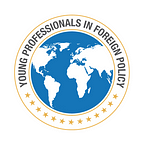The Global Nature of Border Disputes: The Transformative Effect of Oil
By Dan Kent
Many of Latin America’s border disputes are rooted in its colonial history. The dispute between Venezuela and Guyana is no different, having wide-ranging implications for the future of both nations. As energy markets continue to roil the globe with an array of supply-chain and demand shocks produced by various conflicts and the COVID-19 pandemic, this conflict deserves to be reanalyzed.
Century-Old Dispute Born from Former Colonizers
Guyana is an English-speaking former British colony in northern South America, with a population of less than one million. According to recent figures, it is one of the poorest countries in South America, with over a third of the country living in poverty and a fifth in deep poverty.
As in much of the rest of the Americas, the modern-day border dispute between Venezuela and Guyana originates in the history of its former colonial powers. When the British took over, they paid cartographer Robert Schomburgk to establish a border line between British Guiana and Venezuela — resulting in the so-called “Schomburgk line” — extending their territory far to the west and encompassing an additional 33,000 square miles of territory. The Venezuelans quickly disputed this line, noting that they claimed much of this land after independence from Spain. Eventually, both countries submitted to the United States for arbitration, with the Venezuelans confident they would rule in their favor. Accordingly, they agreed to the Treaty of Arbitration, which governed the dispute in 1897. In the end, the selected tribunal members tasked with settling the dispute largely asserted the Schomburgk Line, giving the British the vast area of land they had claimed.
Venezuela has disputed the border line ever since, claiming the land known as “Guyana Essequiba” and denying the authority of the arbitration agreement as illegitimate, often referring to the land as “Zona en Reclamación,” or “Zone in Reclamation.” And although international agreements were signed that promised to resolve the issue, that has yet to happen. The dispute was eventually remanded to the United Nations after failing to be resolved between the two nations. The UN then put the case under the jurisdiction of the International Court of Justice (ICJ), which is host to several other border-related and territorial disputes in South America.
Contested Land and Mismanaged Resources
The contested land has always been home to abundant natural resources, including gold and salt flats, with the dispute holding substantial economic potential for Venezuela. But in 2015, the disagreement took on even more significant economic importance from natural resources off the coast. The maritime area Venezuela claimed was theirs and occupied and internationally recognized as Guyanese-administered waters was the site where considerable oil reserves were discovered. Over the subsequent years, Exxon, the company awarded the exclusive license to drill, found ever-increasing oil reserves. One journalist described this amount: “If all goes well, one of the poorest countries in South America could become one of the wealthiest….as if this were a Persian Gulf sheikhdom.” Recent figures put the total at 10 billion barrels of oil and gas. At roughly 120 miles off the Guyanese coast, control over the waters where oil was discovered is subject to the 1982 U.N. Convention on the Law of the Sea, which grants exclusive economic zones up to 200 nautical miles off the coasts for sovereign states.
Venezuela, which has hugely mismanaged its oil industry and economy, desires to control these resources as it believes them to be rightfully within its domain. However, even without this transformative discovery of oil in internationally-recognized Guyanese waters, Venezuela is home to the world’s largest oil reserves.
While heavily mismanaging its energy industry, Venezuela has asserted itself in the region over the years by detaining or intercepting several merchant ships, including a U.S. Exxon seismic survey vessel. And as recently as January 2020, Nicolas Maduro, the president of Venezuela, released a presidential decree claiming sovereignty over the area. In response, the United States began joint maritime patrols with Guyanese ships in 2020.
Conclusion
A ruling from the ICJ on the case is likely to be made sometime in late 2023. However, most observers have noted that the court is unlikely to grant Venezuela’s territorial gains, and even when it rules, little may change due to Venezuela’s refutation of its jurisdiction. While materials from Guyana in support of their position were due to the court on March 8, 2022, Venezuela’s materials are due in March of 2023, and it is unclear if they will even participate.
It is worth keeping the conflict in mind in an age of increasingly unpredictable authoritarian actions and a challenging energy landscape. While Venezuela’s Maduro has shown no outright interest in a military conflict over the area, the world has recently been surprised by relatively sudden authoritarian aggression, as with Russian President Vladimir Putin in Ukraine. Maintaining an understanding of the deep-rooted nature of the Venezuela-Guyana border dispute will be critical with such transformative wealth at stake.
Dan Kent is a research and evaluation professional currently working in philanthropy in New York and is a staff writer for the Emerging Voices column.
